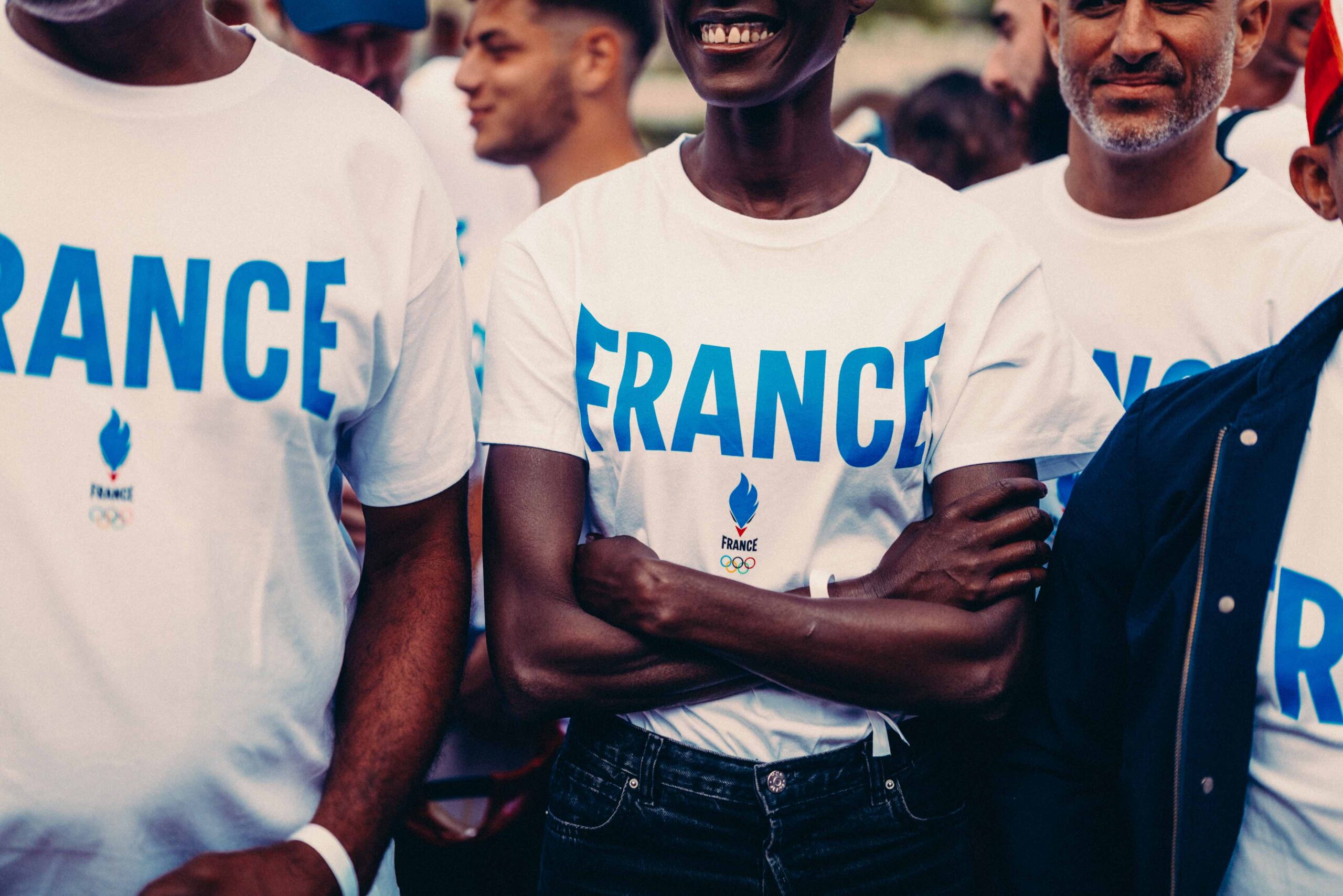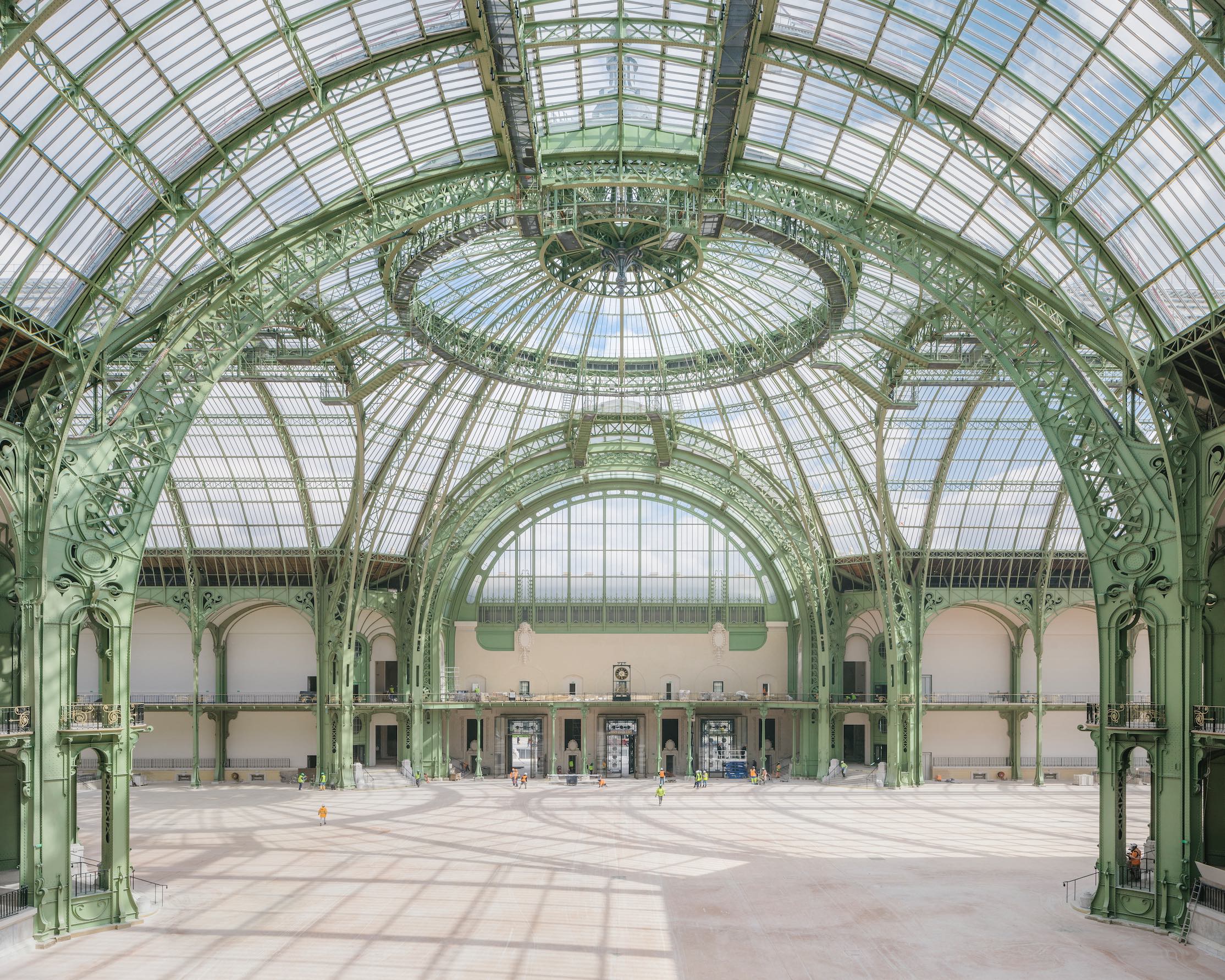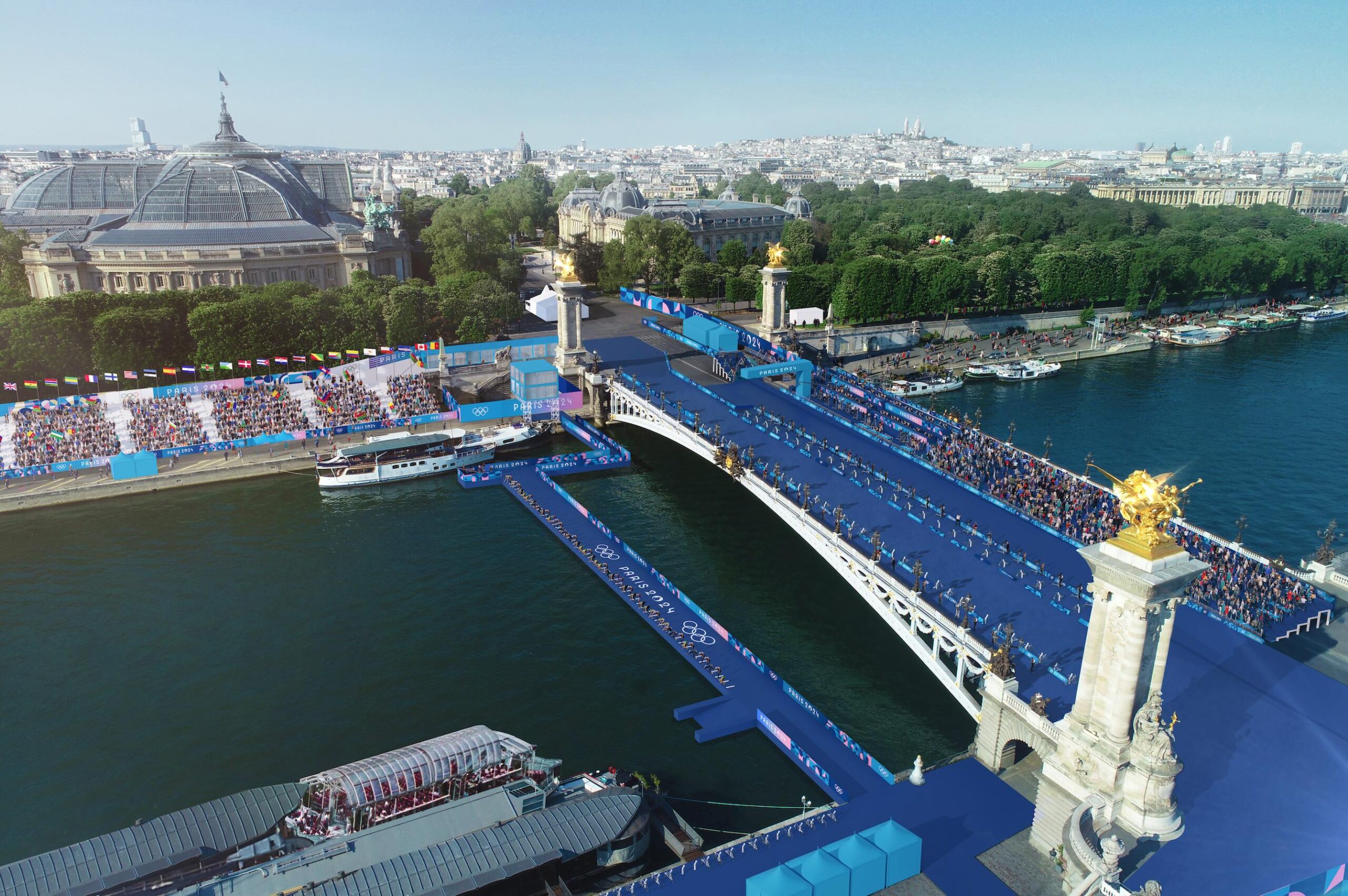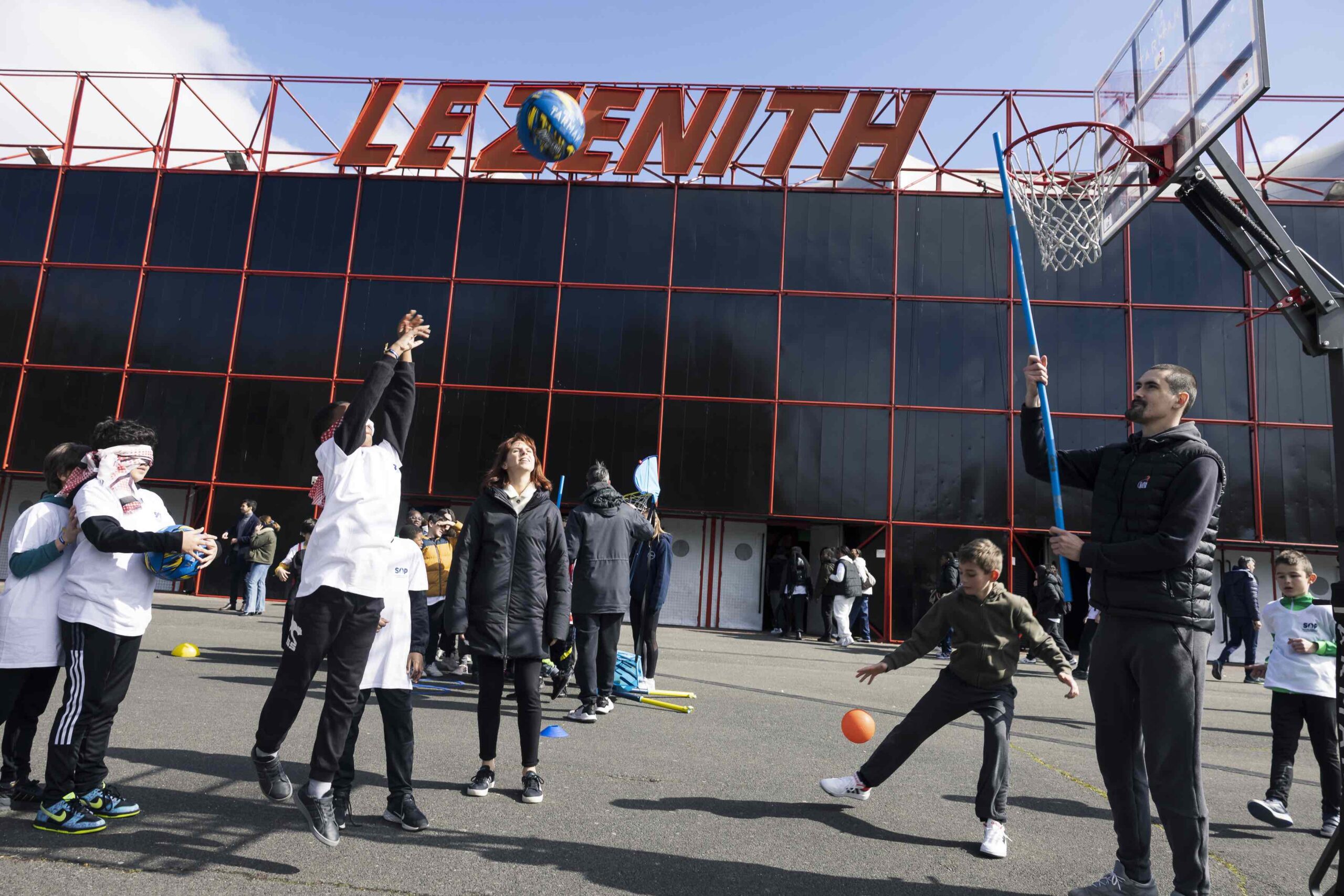A century after hosting its last Olympic Games, the French capital prepares to welcome the Olympic Flame of Paris 2024. As the world gears up to celebrate, ICON explores the transformative effects the Olympic Games can have on urban landscapes. From generating iconic landmarks to revitalising neglected areas, how might Paris 2024 reshape the urban profile of the city?
 Photography by Laurent Kronental for Chatillon Architectes featuring Le Grand Palais
Photography by Laurent Kronental for Chatillon Architectes featuring Le Grand Palais
Words by Harriet Thorpe
The very first modern Olympic Games in Athens in 1896 was a catalyst for the restoration of its ancient Panathenaic Stadium in white Attic marble as a proud moment of cultural renaissance on an international stage. Ever since, the architecture of the Games has become a tool for urban transformation – to varying degrees of success and failure – tackling issues such as regeneration, transport and national identity.
Hosting the Games for the third time in 2024, Paris plays a key role in Olympic history. It was French academic Pierre de Coubertin who pioneered the revival of the Ancient Greek sporting event in the late 19th century, arguing for the moral, social and democratising benefits of organised sport. Paris hosted the second Olympic Games and the eighth in 1924, making the year 2024 (the 33rd Games, 100 years later) an interesting moment of reflection.
During this time, we’ve seen Olympic architecture evolve from campuses of brick modernism (Amsterdam, 1928) and grand neoclassicism under the Nazis (Berlin, 1936), to colossal feats of concrete engineering by Pier Luigi Nervi (Rome, 1960) and Kenzo Tange (Tokyo, 1964), to high-tech tensile membranes by Frei Otto (Munich, 1972) and expressions of art and identity with Frank Gehry’s shimmering El Peix (Barcelona, 1992) and Herzog & de Meuron and Ai Wei Wei’s Bird’s Nest (Beijing, 2008).
 Photography courtesy of Paris 2024
Photography courtesy of Paris 2024
What marks Paris 2024 however is an absence of building, with 95% of Olympic sports venues being already in existence or temporary structures. It’s a move that consciously limits the high carbon cost of new construction, in line with the city’s vast sustainable urban evolution initiated by mayor Anne Hidalgo from 2020, and France’s pledge in 2016 to reduce carbon emissions by 55% by 2030 as part of the Paris Agreement.
By moving into existing venues, the Olympics simply continues 100 years’ worth of sporting history. Hockey is hosted at the Yves-du-Manoir stadium, built as the main 1924 Olympics venue, and football at the 1972 Parc des Princes, home of Paris Saint-Germain. New 21st century facilities are also stepping up: the high-tech Bercy Arena, Porte de la Chapelle (home of basketball) built of timber and recycled aluminium, and architect Christian de Portzamparc’s Paris La Défense Arena.
If there had to be an architectural icon of Paris 2024, it would probably be the timber Aquatics Centre designed by Dutch architect VenhoevenCS and local architect Ateliers 2/3/4/, one of two new permanent venues being built, it shows off the low carbon building material that France has pioneered in the construction industry in recent years. Its colossal curved roof of glulam, recycled from construction waste, spans 89m at just 50cm in diameter. Not only is it a feat of economy, the material brings warmth and humanism, plus it’s a canvas for one of France’s largest urban solar farms supplying all of its energy.
 Photography by Laurent Kronental for Chatillon Architectes featuring Le Grand Palais
Photography by Laurent Kronental for Chatillon Architectes featuring Le Grand Palais
There’s also 44 soaring timber arches at the 10,000 sq m Grand Palais Éphémère, the location for judo, wrestling, wheelchair rugby and para judo. Designed by Jean- Michel Wilmotte, it’s clad in a recyclable, mineral-based polymer skin, and set to be deconstructed and recycled post-use. The temporary building was assembled in just three months in 2021 as a substitute for its belle époque counterpart the Grand Palais (which is readying itself with the help of Chatillon Architectes for reopening to host taekwondo and fencing).
The Grand Palais Éphémère is just one of a number of temporary venues to be woven into the urban fabric of the city: an exciting prospect for visitors who can expect to watch beach volleyball at the foot of the Eiffel Tower, equestrian sports at Versailles, BMX and skateboarding at Place de la Concorde to name a few – a buzz illustrated in the Olympics and Paralympics posters.
Landscape architect Gustafson Porter + Bowman is creating a permanent green corridor of paths, trees and planting connecting venues in this central zone, an initiative that only accelerates Hidalgo’s wider urban plans, which include 170,000 new trees by the end of 2026 and improved pedestrian and cycling networks.
 Photography courtesy of Paris 2024, Jean-Louis Bellurget, featuring Pont Alexandre III – Triathlon
Photography courtesy of Paris 2024, Jean-Louis Bellurget, featuring Pont Alexandre III – Triathlon
The river Seine is central to the evolution of public space; the Olympics is an apt deadline for a long-term campaign for better water quality (Hidalgo and French president Emmanuel Macron have promised to take a dip), and plans for new public swimming facilities by 2025. While the Seine serves as the location for the Opening Ceremony on 26 July and open water swimming (subject to water testing), disruptions to local public and commercial use of the banks are expected, such as the 428 of the 932 ‘bouquinistes’ bookseller boxes reported to be temporarily dismantled. Time will tell how the city itself fares during the Olympics and if the legacy plans might offer significant compensation.
Over the past century, legacy has become an increasing focus for cities whose citizens demand what all of this investment leaves behind. Amid stories of ghost towns and abandoned venues, there have also been tales of regeneration such as Barcelona’s coastline and London’s industrial east. Paris 2024 has based its Athletes’ Village in Seine-Saint-Denis, a 52ha site north of the city spanning three historically deprived towns on former industrial land. Led by French architect Dominique Perrault, the design houses 6,000 across mid-rise buildings, with 25 to 40% of the apartments (dependent on municipality) destined for social housing and the rest let out ‘affordably’ post-Games.
 Photography courtesy of Paris 2024, Benjamin Boccas, featuring SOP 2023, Zenith Paris La Villette
Photography courtesy of Paris 2024, Benjamin Boccas, featuring SOP 2023, Zenith Paris La Villette
Perhaps here in Seine-Saint-Denis lies the biggest transformation of Paris, as the location of the new Aquatics Centre, the Media Village, six sports and a new 18m-wide pedestrian bridge over the N1 motorway connecting to the large Stade de France. Time will tell how the area will develop as a result of new housing, local sports facilities and improved public space. Just over 10 years on and London’s Olympic Park has just opened a new outpost of the V&A museum, as well as university campuses and residential housing.
Paris 2024 is not the first games where reuse and temporary structures were woven into the fabric of the city; Rome 1960 saw the Games occupying 34 different venues from ancient to modern. And it’s not the first Games that has implemented timber (Kengo Kuma’s stadium for Tokyo 2020 utilised wood from disaster-hit regions of Japan), nor where regeneration has played a central role. Yet perhaps it’s the first that has established this powerful tri-factor of reuse, low carbon construction and regeneration so clearly aligned in rhythm with a wider ongoing vision for the city.
Get a curated collection of design and architecture news in your inbox by signing up to our ICON Weekly newsletter
















